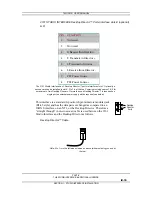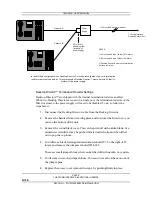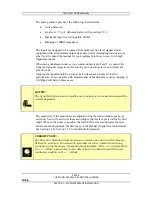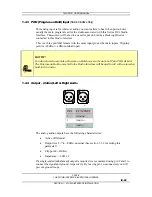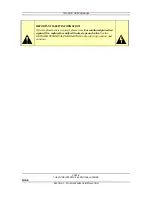
TELOS 2101 USER’S MANUAL
PART IV
THE STUDIO INTERFACE & ADDITIONAL HYBRIDS
IV-24
SECTION 1 – STUDIO INTERFACE INSTALLATION
?
CURIOSITY NOTE!
This is why we at Telos do not claim our hybrids will work without a mix minus.
Sure, they might work without a mix- minus (it has been done), giving borderline
performance, but that’s not good enough. Do the job right and use a mix- minus!
An additional problem is the potential for feedback through the hybrid. In any real
world situation there will be some leakage of the send audio into the received audio.
With gain through the AGC and console, this path creates a loop and feedback can
occur. The Telos 2101 Studio Interface’s extremely low leakage makes this scenario
unlikely, however a clean mix-minus is still essential for optimal performance.
More on Mix-Minus
Simple Mix-Minus
The simplest way to create a mix-minus is to use a distribution amp to feed the mic
preamp output directly to the hybrid, as well to the board (mixer, console, mixing
desk). This approach lacks flexibility, and requires additional equipment if more than
one mic is used and/or more than one mix-minus is required.
Sophisticated Mix-Minus
Most modern broadcast consoles have some provision for mix-minus. The best allow
selective feeds to the phone system. This is useful since sometimes you want only
one mic. feeding the phone, sometimes you want to three or four mics (during the
morning show, for instance), and sometimes you want to play a cart machine, CD, or
other device when callers need to hear and react to contest sound effects, etc. Some
even provide for separate “on line” and “off line feeds”. And when two hybrids are
used, each caller will normally need a separate mix-minus since each hybrid will
need to have the output of the other, if callers are to hear one another (actually, the
2101 Studio Interface allows for a single Mix-Minus, though it is less flexible, see
section 3.3.1 for details). A simplified figure of a two-buss two-hybrid mix-minus
configuration follows:






